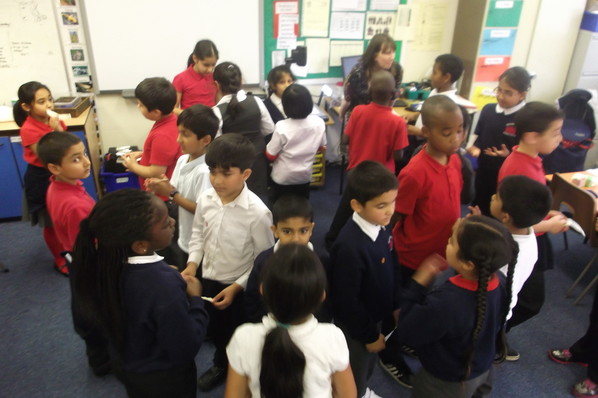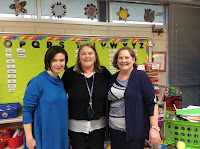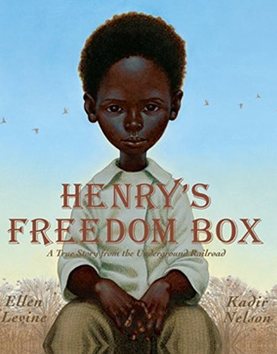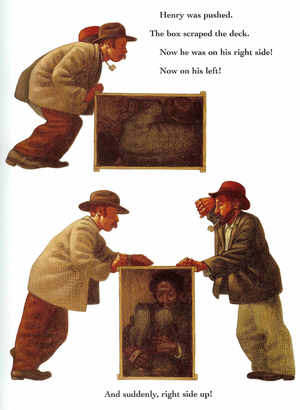Our Mission: “Educate students for lifelong learning and responsible living.”
Our Vision: “Provide a learning environment that promotes and develops academic and
social growth.”
Author of the Month: Maya Angelou
Word of the Month: Brave Rise N Shine: Ms. Hall
Monday Feb. 26 - Grandparents Raising Grandkids 5:30 p.m.
Tues Feb. 27 - PLC Bring Your Laptops and District Performance Assessments
Wed. Feb 28 - Ms. Key's Photo Shoot
Thurs. March 1 - Job Fair Douglas High School 900 ML King, 4 - 7 p.m.
Friday March 2
Word of the Month: Brave Rise N Shine: Ms. Hall
Monday Feb. 26 - Grandparents Raising Grandkids 5:30 p.m.
Tues Feb. 27 - PLC Bring Your Laptops and District Performance Assessments
Wed. Feb 28 - Ms. Key's Photo Shoot
Thurs. March 1 - Job Fair Douglas High School 900 ML King, 4 - 7 p.m.
Friday March 2
We will be revewing Comprehensive Snapshot scores and Performance Assessments during PLC time. Be sure you bring your laptops.
Growth - ELA (still some students to test and will affect overall scores):
3rd Grade - +10.5%
4th Grade - +5.67%
5th Grade - +24.67%
6th Grade - +18%
Math - (Still some students to test and will affect overall scores)
3rd Grade - +9.75%
4th Grade - +4.02%
5th Grade - +18.67%
6th Grade - (-)0.6%
3rd Grade - +10.5%
4th Grade - +5.67%
5th Grade - +24.67%
6th Grade - +18%
Math - (Still some students to test and will affect overall scores)
3rd Grade - +9.75%
4th Grade - +4.02%
5th Grade - +18.67%
6th Grade - (-)0.6%
- Keep learning. Don’t forget
what it is like to be in the shoes of a first-time learner. What comes
easily to one person may not to another. Patience, empathy, and clear
directions help guide a person through the learning process.
- Persevere. I am still learning,
but each week it is getting easier, and I am gaining a lot from all the
rich conversations I am part of. Great things come to those who persevere.
- Ask for help. When you are
interested in trying something new, it helps to have someone with
experience to guide you.
- Sometimes less is more. Twitter limits users to 140 characters. I didn’t understand how deep learning could take place with such a low character count. I now know. My thinking has been enriched by many tweets of 140 characters or fewer.
Twitter Training Take-Aways.... The 2 Sisters.
When it comes to English Learners (ELs), simple teaching
strategies and practices can be some of the most effective. Two tools that
should be in every teaching toolbox are “Think, Pair, Share” and “Circle
Time”. Most educators are aware of these strategies, but many may not
be aware their effectiveness for ELs.

English Learner Best Practices
During the “Think, Pair, Share” strategy, teachers provide
a discussion topic and allow students to work in pairs,
either randomly or intentionally selected, in formulating an answer
or response. After allowing students to work collaboratively, the teacher then
allow students to share their responses with the larger group.
This strategy is effective for ELs in that it:
- Allows ELs to practice with
language in a way that may be less stressful than formulating an answer on
their own and answering in front of the entire class.
- Allows the teacher to
deliberately pair ELs with other students who may best assist in
completing the activity.
- Requires all students to
actively participate and limits the potential of a passive classroom experience
for ELs.
- Allows the teacher to
monitor the conversations and answers to better gauge what potential
language deficits still need to be addressed.
“Circle Time” is also an effective strategy for engaging ELs.
This strategy tends to be easier to manage with older students and may require
some additional planning when working with the younger ones.
The strategy works like this:
The students are divided into two equal groups (if there is an odd
number the teacher can join one of the groups or have one student take the role
of note taker / timekeeper / observer of the activity). The first group forms a
circle facing outward, the second group then forms a circle around the first,
facing inwards (see picture above). Everyone should now be facing a partner.
The teacher begins by posing a question allowing the students to speak with
their partner for a pre-set time. At the end of the allotted time, every
student takes one step to the left or right and the process begins again. The
teacher can go as many rounds as appropriate for the material and the needs of
the students.
Variations on this strategy:
- Teachers can use a new
question every turn to cover additional material.
- Teachers can also provide a
guide sheet or structured outline to accompany the activity, if
appropriate.
This strategy work well for ELs for the following reasons:
- ELs work with the language
with a variety of peers.
- Requires all students to
actively participate and limits the potential of a passive classroom
experience for ELs.
Often teachers primarily rely on “sage on the stage” teaching
strategies. In situations like this, participation and engagement are based
primarily on a student’s willingness and ability to answer a question posed by
the teacher. This type of teaching strategy becomes less effective if students
lack these skills. With EL students, often both are missing. Implementing
strategies that encourage active use of the language in either discreet or
multiple domains, and limit passive classroom experiences, creates a learning
environment significantly more effective in moving your EL students toward
proficiency.
For more information, contact:
For more information, contact:
Dan Ruhl, Title III Program Manager
daniel.ruhl@sde.ok.gov
405.522.5158
daniel.ruhl@sde.ok.gov
405.522.5158
To Develop Every Child Into a Reader:
- Everyday a child reads something they choose to read.
- Every child reads accurately
- Every child reads something they understand.
- Every child writes something that is personal and meaningful daily.
- Every child talks with peers about reading and writing.
- Every child hears an adult reader read fluently.
Coolidge Elementary Academic Goals for 2017- 2018
- All Students WILL achieve academically.
- Reading: Increase reading proficiency by at least one grade level, and know their current F & P level.
- Math: Increase math achievement by 10% with 80% mastery of math facts on grade level.
- Writing: Increase writing proficiency by 15%
- Student Attendance: Increase student attendance to 98%.
- Increase Faculty Attendance to 98%
OKCPS Literacy Standards
OKCPS Math Standards
Melissa Brett | Principal
Coolidge Elementary School | Oklahoma City Public Schools
5212 S. Villa, Oklahoma City, OK 73119
(405) 587-2800
(405) 208-1581 (cell)









